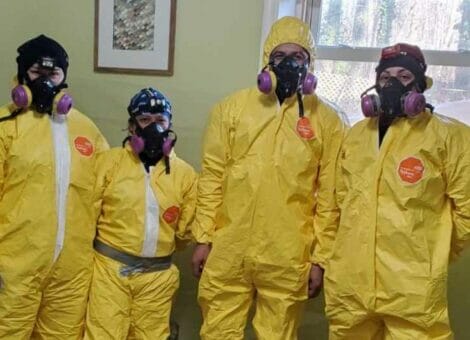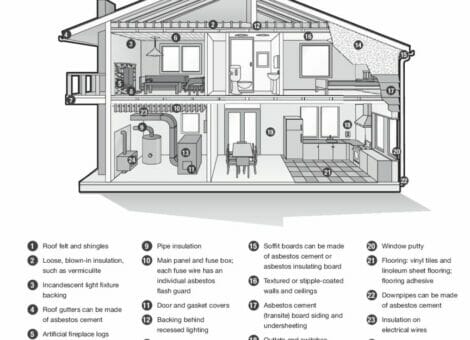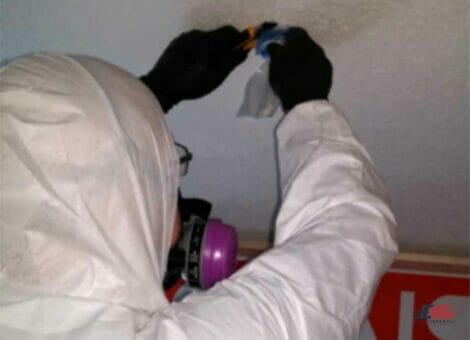
Five Myths About Asbestos IN GEORGIA!
Although asbestos usage has been controlled by government agencies since the 1970s, it may still be found in many U.S. ...
Read More >
Open 24/7
Call: 706-425-9374
Before 1984, black mastic asbestos was a common adhesive for floors in construction and remodeling projects. But did you know it can pose serious health risks? This adhesive could contain up to 85% asbestos!
If your home was built or renovated before 1984, it’s crucial to check for black mastic asbestos in your flooring materials. Don’t take chances with your family’s health. Stay aware and stay safe.
One way to confirm the presence of asbestos in black mastic is by finding an old can of the adhesive. Many older homes have leftover paint or adhesive cans stored in various locations, such as attics, basements, or outbuildings. The presence of these cans can serve as a valuable clue in determining if your flooring adhesive contains asbestos.
Black mastic was primarily used for installing durable floor coverings such as ceramic floor tile, linoleum, and vinyl flooring. While the use of mastic has decreased over time, its remnants can still be found in older homes. Asbestos-containing mastics pose significant health risks, including mesothelioma, a cancer caused by asbestos exposure.
Flooring materials: Ceramic tiles, linoleum, and vinyl flooring often used black mastic adhesive during installation in older homes.
Staircases: Black mastic may have been used to secure the flooring materials on stair steps and landings.
Wall tiles: In some instances, black mastic adhesive was used to install wall tiles, particularly in bathrooms and kitchens.
Baseboards and trim: Black mastic may have been used as an adhesive to secure baseboards or trim pieces to walls or floors.

Asbestos black mastic is typically hidden beneath floor coverings and becomes visible only when they are removed. The adhesive is primarily black, but other colors may be present due to remnants of subflooring or floor coverings. Asbestos fibers are not visible within the mastic, making it difficult to identify without proper testing.
The original composition of black mastic included asphalt-based cement rather than asphaltic cement. Modern latex mastics, which are water-soluble, have replaced older, potentially hazardous mastics. It is important to know the type of mastic used in your home to assess the risk of asbestos exposure.
While black mastic cutback is resistant to water damage and many cleaning agents, intense sanding can cause the adhesive to thicken and become tar-like. Sun exposure may also alter its appearance and consistency. When renovating, be cautious when dealing with older flooring adhesives, as they could contain asbestos.

If you suspect your home may contain asbestos black mastic, it is crucial to have it tested by a professional. Asbestos testing is the most reliable method for determining the presence of asbestos fibers in your flooring adhesive. This process helps ensure the safety of your family and can guide any necessary remediation efforts.
Professional asbestos testing involves taking a sample of the suspected material and analyzing it in a lab. This process is critical for accurate results and should only be performed by a certified asbestos professional. Attempting to collect a sample yourself can release asbestos fibers into the air, increasing the risk of exposure.
Once the testing is complete, if asbestos is detected, it is essential to consult with a qualified asbestos abatement professional. They will provide guidance on how to safely remove and dispose of asbestos-containing materials in your home. Taking these precautions can help protect your family from the harmful effects of asbestos exposure.

Although asbestos usage has been controlled by government agencies since the 1970s, it may still be found in many U.S. ...
Read More >

5 keys to determine if asbestos in home Asbestos is one of those substances that almost everyone knows is harmful, ...
Read More >

At Es America, we frequently encounter clients who are perplexed and upset by the various information they receive from inspection ...
Read More >